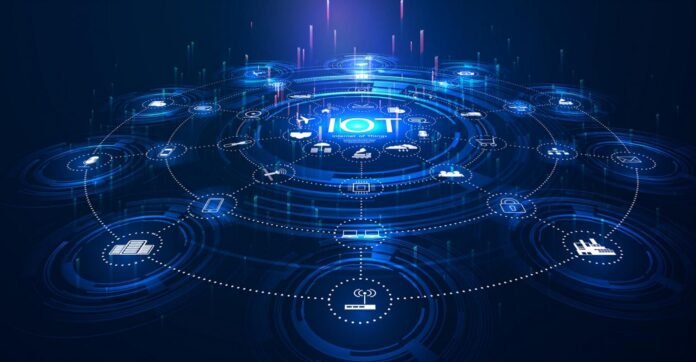As the world continues to move towards more sustainable energy sources, new technologies are being developed to help manage and use renewable energy effectively. Internet of Things (IoT) devices are leading the charge in revolutionizing how we manage energy, both at home and in industrial settings. In this blog post, we will explore how IoT is changing the way we use and manage energy so that it can be used in a more efficient and economical manner. We’ll also look at some of the potential applications and benefits of using IoT-enabled energy systems. Ready to learn more? Let’s dive in!
What is IoT?
IoT, or the Internet of Things, is a term used to describe the growing network of physical objects that are connected to the internet. This includes everything from smartphones and laptops to wearable devices and home appliances. IoT devices are able to collect and share data, which can be used to improve efficiency and optimize performance.
The potential applications of IoT are nearly limitless, but one area where it is having a particularly profound impact is in the way we use and manage energy. By connecting energy-related devices and systems to the internet, we can gain valuable insights into how they are being used and identify opportunities for improvement.
For example, imagine you have a smart thermostat in your home that is connected to the internet. It can collect data on your heating and cooling habits and then make recommendations on how you can save energy (and money). Or, imagine you have a solar panel array that is connected to the grid. With real-time data on energy production and consumption, you can make sure that you are using as much of your own renewable energy as possible and minimize your reliance on fossil fuels.
IoT is changing the way we think about energy management by making it more dynamic, efficient, and personalized. It’s an exciting time for those in the energy industry, and we can only imagine what new innovations will come about as IoT technology continues to evolve.
The different types of IoT devices
IoT devices come in all shapes and sizes, each with their own unique capabilities. Here are some of the most common types of IoT devices:
Smart thermostats: Smart thermostats are one of the most popular types of IoT devices. They allow you to control your home’s temperature remotely, through an app or web interface. You can also set up schedules and routines to further automate the process.
Smart lighting: Smart lighting is another popular type of IoT device. These lights can be controlled remotely, through an app or web interface, and can also be integrated with other smart home devices. For example, you could set up your lights to turn on when your security system detects movement.
Smart security cameras: Smart security cameras are becoming increasingly popular as a way to keep an eye on your home or business remotely. These cameras can be accessed through an app or web interface, and often include features such as night vision and motion detection.
Smart locks: Smart locks are a great way to add an extra layer of security to your home or business. These locks can be controlled remotely, through an app or web interface, and can often be integrated with other smart home devices. For example, you could set up your smart lock to automatically unlock when your security system detects that you’re nearby.
How IoT is changing the energy industry
The Internet of Things (IoT) is radically changing the way we use and manage energy. By connecting devices and systems to the internet, IoT enables real-time monitoring and control of energy usage and production. This provides a wealth of data that can be used to improve efficiency, optimize operations, and reduce costs.
IoT is already having a major impact on the energy industry. For example, smart meters are being used to collect data on electricity consumption. This data is then used to help utilities better understand customer usage patterns and improve grid management. Similarly, IoT-enabled wind turbines are providing detailed data on wind conditions that is helping operators optimize energy production.
In the future, IoT will continue to transform the energy industry. For instance, distributed energy resources such as solar panels and battery storage will become more prevalent. These resources will be connected to the grid via IoT, allowing for two-way power flow and greater flexibility in how energy is generated and consumed.
The benefits of using IoT in the energy industry
The benefits of using IoT in the energy industry are many and varied. For one, IoT can help to improve energy efficiency by providing real-time data on energy use. This data can be used to optimize energy use and reduce wastage. Additionally, IoT can help to improve grid stability and resilience by providing data that can be used to identify potential issues and correct them before they cause problems. Additionally, IoT can provide data that can be used to better understand and predict consumer behavior, allowing energy providers to better meet customer needs.
Conclusion
IoT technology has proven to be an invaluable tool in revolutionizing the way we use and manage energy. By providing real-time data about energy consumption, IoT devices can help us make smarter decisions when it comes to energy usage. Additionally, AI-powered analytics allow for more accurate predictions of future energy use and demand, allowing us to better plan our resources accordingly. As this technology continues to advance and become even more widespread, it’s likely that it will continue to transform the way we think about how we use and manage our energy needs in the years ahead.
